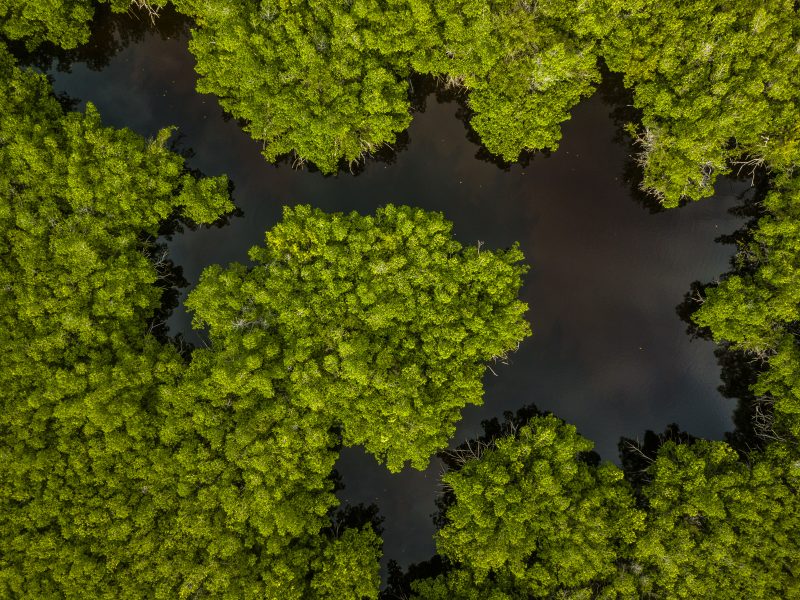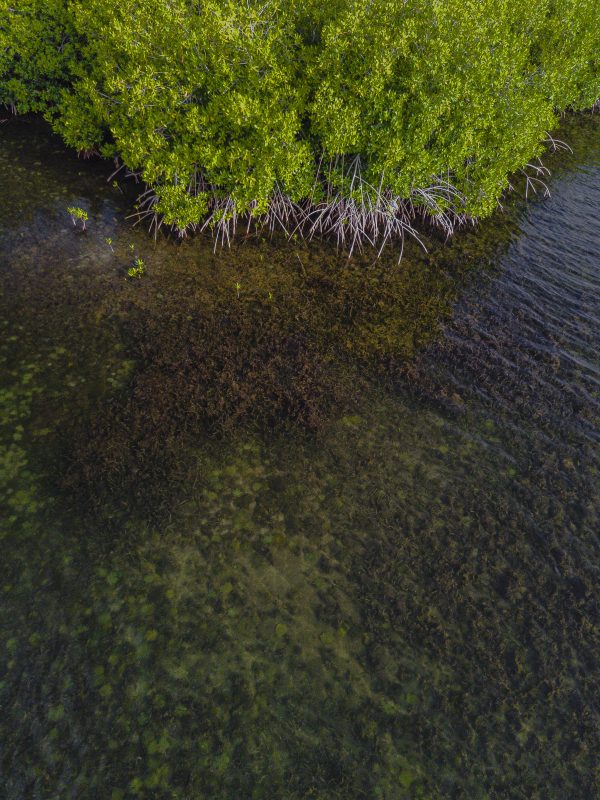Central Mangrove Wetland
The Central Mangrove Wetland is the ecological heart of Grand Cayman. Totalling 8,655 acres, the wetland performs several physical and biological functions which are economically and culturally important to the island.

The Central Mangrove Wetland is the ecological heart of Grand Cayman. Totalling 8,655 acres, the wetland performs several physical and biological functions which are economically and culturally important to the island.

The Central Mangrove Wetland is part of a large-scale water flow system, filtering and conditioning the surface water and shallow ground water which flows into the North Sound and provides a constant flow of nutrients. These nutrients form the base of a complex food chain from the turtle grass and shrimp mounds in Little Sound, through to the snappers and lobsters which move from the mangroves to the reef. The entire living system of the North Sound is inextricably linked to the Central Mangroves and would collapse if the wetland were ever destroyed.
West Indian Whistling Duck, Grand Cayman Parrots, Snowy Egrets and many other native birds depend on the Central Mangrove Wetland for food, shelter and a place to breed. Various crab species, smaller crustaceans and countless species of insects and other invertebrates inhabit the wetland, along with fish, Hickatees, Agoutis and many other animal life forms. The Red, Black and White Mangroves are joined by Buttonwoods, and a variety of dry land trees like Mahogany and Wild Fig have also gained a foothold in the more remote areas of the wetland, where fresh rainwater sometimes floats on top of the salty groundwater.
Saturated air rising above the Central Mangrove Wetland forms rapidly developing clouds, which are carried west by the prevailing winds and dump rain over the central and western districts of Grand Cayman. This process is believed to contribute a large part of western Grand Cayman’s rainfall.

As rising sea levels gradually submerges mangrove wetlands, the dead wood and leaf litter on the wetland floor forms peat, which builds up on the wetland floor to keep pace with rising sea levels. Over thousands of years, thick layers of mangrove peat have been deposited in areas where the underlying rock is now far below sea level.
Approximately 1,500 acres of the Central Mangrove Wetland is protected through the Marine Parks Law, forming part of the Environmental Zone which has been in effect for Little Sound and its fringing mangroves since 1986. Efforts are now underway to increase the area of the wetland under protection through conservation land purchase. To-date, the Trust has purchased 1,032 acres as part of its Central Mangrove Wetland reserve.